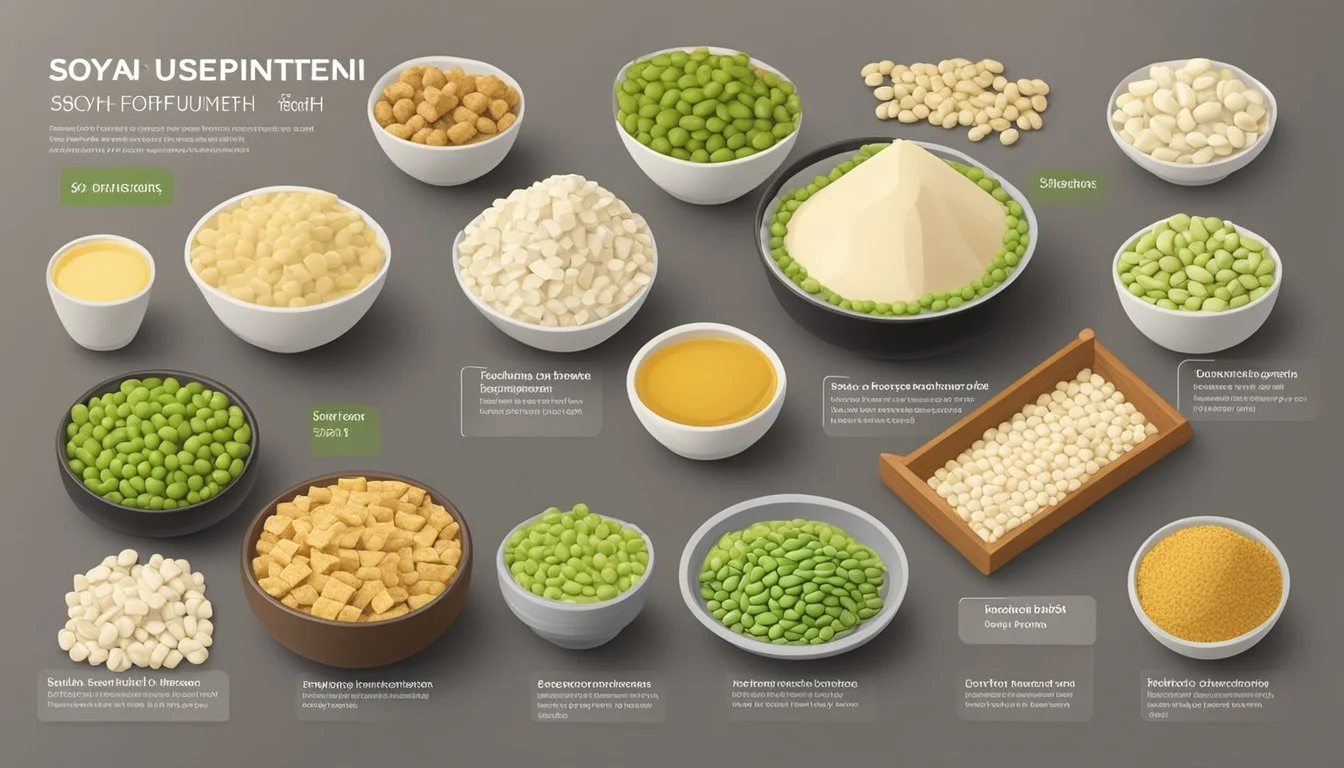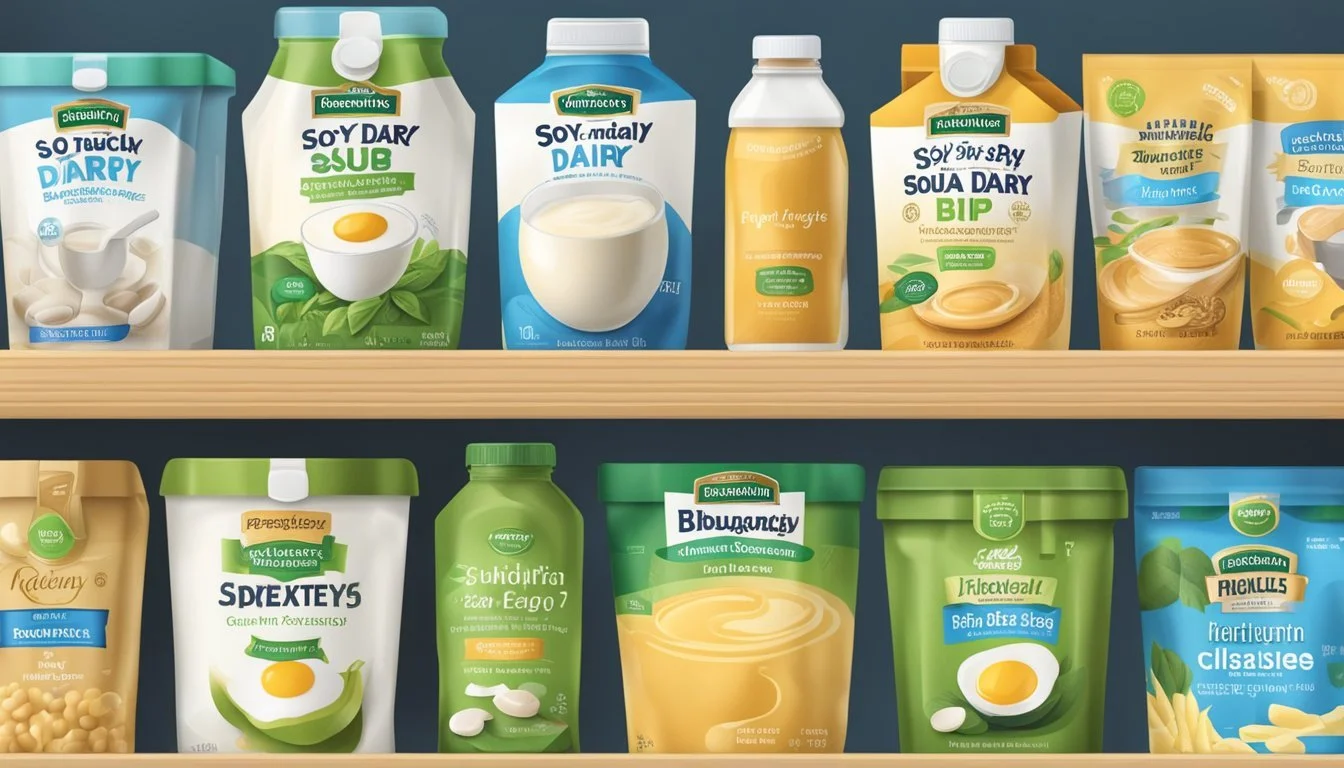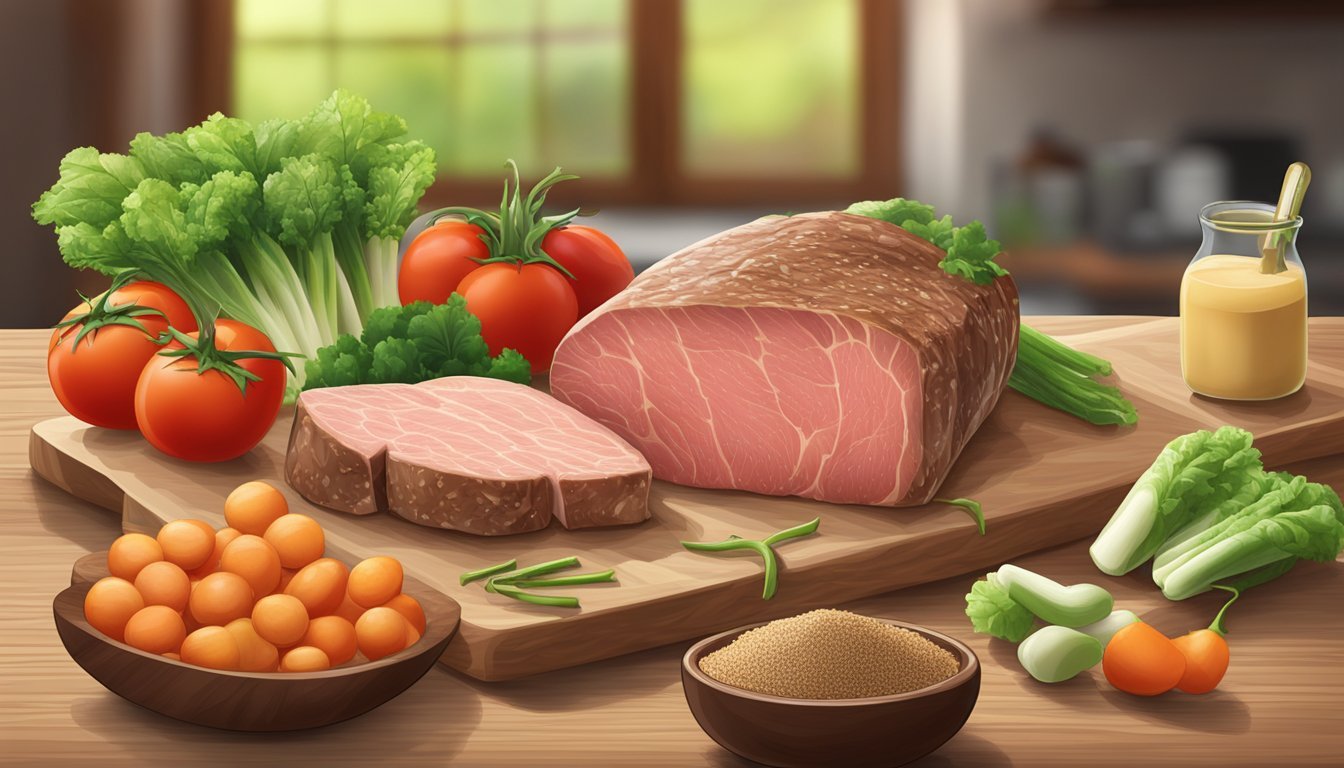Soybeans Substitutes
Top Alternatives for Your Diet
Soybeans are a staple in many diets due to their high protein content and numerous health benefits. For those with dietary restrictions or allergies, finding alternatives can be crucial. Lentils, chickpeas, and black beans are excellent sources of protein and can easily replace soybeans in various dishes. These legumes not only offer similar nutritional value but also bring unique flavors to your meals.
Plant-based eaters often look for substitutes that align with vegan diets. In this context, quinoa and hemp seeds are noteworthy options. Both are nutrient-dense and versatile, making them suitable for a range of culinary applications. Hemp seeds, in particular, contain all 10 essential amino acids, making them a complete protein source.
For those who enjoy the convenience of premade soy products, tempeh and tofu, other plant-based alternatives like pumpkin seeds and pea protein can be beneficial. These options not only cater to individual taste preferences but also contribute to a balanced and diverse diet.
Nutritional Considerations of Soybean Substitutes
When choosing alternatives to soybeans, it is crucial to consider their nutritional profile. Key aspects include protein content, vitamin and mineral presence, and overall calorie and macronutrient management.
Protein Content in Alternatives
Chickpeas, lupins, and lentils are excellent substitutes for soybeans in terms of protein.
Chickpeas offer high protein and fiber, similar to soybeans. They also provide essential amino acids.
Source Protein Content (per 100g) Soybeans 36g Chickpeas 19g Lupins 32-42g (varies by variety)
Lentils also deliver about 9g of protein per 100g, lower than soybeans but still substantial for dietary needs.
Vitamin and Mineral Comparison
Soybean substitutes should be compared for their vitamin and mineral offerings.
Chickpeas are rich in iron, zinc, and folate, contributing to overall health. Lupins provide notable iron content but their calcium levels are not as high as soybeans.
Nutrient Soybeans Chickpeas Lupins Iron 15.7mg 6.2mg 4.65mg Calcium 277mg 49mg 180mg Zinc 4.89mg 3.43mg 3.3mg
Managing Calories and Macronutrients
Pay attention to the calorie content and macronutrient balance of substitutes.
Chickpeas have around 364 calories per 100g, significantly higher than soybeans which have 446 calories. This makes chickpeas a lower-calorie option.
Source Calories (per 100g) Carbohydrates Fats Soybeans 446 30g 20g Chickpeas 364 61g 6g Lupins 371 40.4g 10.2g
Managing these nutrients efficiently can help maintain balanced diets and avoid excessive cholesterol intake.
Soy-Free Protein Substitutes
Exploring soy-free protein substitutes ensures that those with soy allergies or preferences for non-soy products have ample nutritious and diverse options. Highlighted below are some of the most effective soy-free protein alternatives.
Legume-Based Alternatives
Legumes provide a rich source of protein and are versatile in cooking.
Chickpeas: These legumes pack a substantial protein punch and are highly versatile. They can be made into hummus or added to salads and stews. Roasted chickpeas also serve as a tasty snack.
Lentils: Lentils are beneficial due to their high protein and fiber content. They can be used in soups, salads, and even veggie burgers, making them a crucial part of a soy-free, protein-rich diet.
Peas: Particularly pea protein isolates are common in dairy alternatives and meat substitutes. Peas are not only rich in protein but also nutrients like fiber, iron, and magnesium.
Beans: Various beans such as black beans, kidney beans, and navy beans offer substantial protein amounts. They are versatile and can be used in diverse recipes from chili to salads and bean-based pâtés.
Grain-Based Proteins
Grains can also be excellent sources of protein, besides offering other nutrients.
Quinoa: Renowned for being a complete protein, quinoa supplies all nine essential amino acids. This grain is versatile and can be used in dishes ranging from salads to breakfast porridge.
Tempeh (Non-soy versions): While traditionally soy-based, tempeh can also be made from other legumes such as black beans or chickpeas. These alternatives offer the same firm texture and savory taste without soy.
TVP (Textured Vegetable Protein): Typically made from soy, non-soy versions of TVP are also available, often derived from wheat or pea protein. These mimic the texture of ground meat and can be used in tacos, pasta sauces, and casseroles.
Nuts and Seeds as Substitutes
Nuts and seeds are not only excellent sources of protein but also provide healthy fats and other nutrients.
Pumpkin Seeds: Packed with protein, pumpkin seeds are also a good source of iron, magnesium, and zinc. They can be roasted for a crunchy snack or added to salads, yogurts, and granolas.
Almonds: Versatile and rich in protein, almonds can be consumed whole, as almond butter, or even almond milk. They are also high in vitamin E and healthy fats.
Chia Seeds: Although small, chia seeds provide a significant protein boost and are high in omega-3 fatty acids. They can be incorporated into smoothies, oatmeal, and baked goods.
Soy-Free Sauce Alternatives
Finding soy-free sauce alternatives is essential for those with soy allergies or those who choose to avoid soy for dietary reasons. These alternatives can mimic the umami flavors and versatility offered by traditional soy-based sauces.
Coconut Aminos and Other Soy Sauce Substitutes
Coconut aminos is a popular soy-free substitute made from the sap of coconut trees. It has a mild, sweet flavor and less sodium compared to soy sauce, making it a healthier option. Liquid aminos, derived from either coconut or soy, offer a similar profile to soy sauce without the gluten. Worcestershire sauce, while not a direct replacement, offers a complex flavor that pairs well with many dishes. Additionally, tamarind paste and balsamic vinegar can be used to create a tangy, nuanced flavor in marinades and dipping sauces.
Miso Alternative Options
Miso paste, traditionally made from fermented soybeans, can be substituted with non-soy alternatives such as chickpea miso or adzuki bean miso. These versions maintain the salty, rich flavor typical of miso without involving soy. Chickpea miso tends to have a lighter taste, making it suitable for soups and dressings. Adzuki bean miso offers a deeper umami flavor, ideal for broths and marinades.
Substitutes for Asian Condiments
For those looking to replace soy-based Asian condiments, fish sauce and oyster sauce are excellent options. Fish sauce, made from fermented fish, provides a salty and pungent flavor profile. Oyster sauce, derived from oysters, is slightly sweet and pairs well with many stir-fry dishes. Tamari, although similar to soy sauce, is often wheat-free and sometimes lower in sodium. Additionally, using combinations of ginger, garlic, vinegar, and molasses can help create a well-rounded flavor for homemade Asian sauces without soy.
All these alternatives allow for flavorful cooking while respecting dietary restrictions, ensuring delicious and varied dishes without using soy.
Dairy and Egg Substitutes
Finding effective alternatives for dairy and eggs can be essential for those with allergies, dietary restrictions, or ethical concerns. This section will explore various substitutes for milk, cheese, and eggs, highlighting their benefits and how they can be used in everyday cooking and baking.
Alternative Milk Options
Soy Milk is a popular choice due to its protein content and creamy texture. It works well in coffee, baking, and even savory dishes.
Almond Milk offers a nutty flavor and is low in calories, making it ideal for smoothies and cereals. It may not thicken sauces like cow's milk but adds a unique taste.
Rice Milk is hypoallergenic and has a light, slightly sweet flavor suitable for drinking and baking. However, it is lower in protein and may need to be fortified.
Vegan Cheese Varieties
Nutritional Yeast gives a cheesy flavor when sprinkled on popcorn, pasta, or salads. Rich in B-vitamins, it’s a great nutritional boost.
Cashew Cheese has a creamy texture and is made by blending soaked cashews with water, lemon juice, and nutritional yeast. It works well in dips and spreads.
Vegan Shredded Cheese uses ingredients like coconut oil and starches. It can melt similarly to dairy cheese and is excellent for pizza and grilled sandwiches.
Egg Replacements for Baking and Cooking
Ground Flax Seed can be mixed with water to form a gel-like consistency used in baking. Combine 1 tablespoon of ground flax seed with 2-3 tablespoons of water for one egg.
Chickpea Flour can be used for binding and adding moisture to recipes. Mix 2 tablespoons of chickpea flour with 1 tablespoon of water for one egg replacement.
Agar Powder, derived from seaweed, serves as a good binder and can be used to replace egg whites. Dissolve 1 tablespoon of agar powder in 1 tablespoon of hot water, refrigerate, and whip before use.
These substitutes allow for versatile and delicious dairy-and-egg-free cooking, accommodating various dietary needs without compromising on taste or texture.
Meat Substitutes for Vegetarians and Vegans
There are various meat substitutes available for vegetarians and vegans, offering plenty of options from plant-based meats to natural vegetable proteins with unique textures and flavors. These substitutes can provide essential nutrients like protein, iron, and fiber.
Plant-Based Meat Alternatives
Tofu is a versatile soy-based product that can absorb sauces and marinades well, making it perfect for stir-fries, salads, and soups. It's important to remove excess water before cooking for better texture.
Seitan, derived from vital wheat gluten, has a texture similar to chicken. Its bland taste can be enhanced using soy sauce, spices, and nutritional yeast. Seitan works well in stews, tacos, or marinated and grilled dishes.
Beyond Burger and Impossible Burger are popular plant-based products that mimic the taste and texture of beef. These burgers are convenient, protein-rich alternatives suitable for hamburgers or other meat-based recipes.
Mushrooms, such as portobello or shiitake, offer a meaty texture and rich flavor, making them suitable for grilling, stir-frying, or adding to salads.
Natural Vegetable Proteins
Beans and lentils are excellent sources of protein and fiber. They can be used in soups, salads, stews, and even blended into dips.
Quinoa is a complete protein, containing all nine essential amino acids. It's versatile and can be used in salads, bowls, or as a rice substitute.
Chickpeas serve as a base for many vegan dishes, including hummus, falafel, and stews. Roasted chickpeas also make a crunchy snack.
Nuts and seeds like almonds, walnuts, chia seeds, and flaxseeds provide healthy fats and protein. They can be added to smoothies, oatmeal, or used as toppings for various dishes.
Cooking and Baking with Soy Substitutes
When cooking or baking without soy, it's important to select ingredients that maintain texture, flavor, and nutritional value. There are various soy-free substitutes, from flours to oils, each serving a specific purpose in recipes.
Soy-Free Baking Ingredients
Flours: For soy-free baking, alternatives like chickpea flour, quinoa flour, and rice flour are excellent. Chickpea flour is high in protein and fiber, making it a nutritious substitute. Quinoa flour brings a distinct, aromatic flavor and richness to baked goods. Rice flour provides a neutral taste and a slightly crunchy texture in recipes.
Margarines and Fats: Soy-free margarine brands offer a direct replacement in baking, ensuring the texture remains soft and consistent. Coconut oil is another valuable option, lending a hint of coconut flavor and maintaining a soft crumb in baked goods. It’s especially useful in recipes needing solid fat at room temperature.
Sweeteners: When replacing soy-based ingredients like soy lecithin in baking, think about the texture and moisture. Dark molasses or maple syrup can contribute to both flavor and moisture content, keeping baked items rich and chewy.
Cooking Oils and Fats without Soy
Coconut Oil: Rich in saturated fats, coconut oil is a versatile substitute in cooking, both for sautéing vegetables and in baking. It solidifies at room temperature and provides a subtle coconut flavor to dishes.
Olive Oil: This is another excellent soy-free option. It works particularly well in savory dishes, adding a robust flavor profile. Choose extra virgin olive oil for dressings and cold dishes, and light olive oil for higher heat cooking.
Other Oils: Hemp oil and avocado oil are also great choices. Hemp oil offers essential amino acids and a slight nutty flavor, while avocado oil is rich in healthy fats and suitable for high-temperature cooking. Both ensure a smooth texture in various dishes.
Using spices like garlic powder, paprika, and fresh or dried herbs can elevate the dish's flavor without relying on soy-based condiments. Mushrooms also serve as a fantastic protein-rich, soy-free ingredient, especially in vegan and vegetarian cooking.
Understanding Soy Allergies and Intolerance
A soy allergy is an immune system response to proteins found in soybeans. This reaction can cause a variety of symptoms, such as rashes, stomachaches, itchy throats, coughs, and stuffy noses.
Common Symptoms of Soy Allergy:
Rash
Stomachache
Itchy throat
Cough
Stuffy nose
Soybeans belong to the legume family, which also includes navy, kidney, string, black, and pinto beans, chickpeas, lentils, carob, licorice, and peanuts. Sensitivity to one legume may often mean sensitivity to others.
Legume Family:
Navy beans
Kidney beans
String beans
Black beans
Pinto beans
Chickpeas
Lentils
Carob
Licorice
Peanuts
People with soy allergies need to avoid certain foods that commonly contain soy. These include edamame, miso, natto, soy sauce and its variations, soy-based fiber, flour, nuts, sprouts, and soy-based milk.
Foods to Avoid with Soy Allergy:
Edamame
Miso
Natto
Soy sauce
Soy-based fiber
Soy flour
Soy nuts
Soy sprouts
Soy milk
Soy allergies are more common in infants and young children but can develop at any age.
Unlike food allergies, celiac disease involves an autoimmune response to gluten. Both conditions require careful dietary management, though they involve different triggers and responses. While soy allergy focuses on avoiding soy proteins, celiac disease requires avoiding gluten found in wheat, barley, and rye.
By understanding the specific triggers and required dietary adjustments, individuals with soy allergies can manage their symptoms effectively and maintain a balanced diet without soy products.
Soy-Free Snacking and Convenience Foods
Soy-free snacks and convenience meals are essential for individuals avoiding soy due to allergies, dietary restrictions, or personal preferences. This section explores pre-packaged snacks and quick meal options that cater to those needs.
Pre-Packaged Soy-Free Snacks
When selecting soy-free snacks, reading labels is crucial. Popcorn is a popular choice; many brands offer soy-free variations. Crackers and chips made from ingredients like rice or potatoes are also widely available.
Rice cakes provide a light, crunchy alternative that can be paired with various toppings. For those seeking something more substantial, snack bars from brands like Orgain offer soy-free, plant-based protein without compromising on taste. Always check ingredients to ensure no hidden soy derivatives.
Convenience Meals without Soy Ingredients
Finding soy-free convenience meals involves careful selection based on ingredient lists. Beyond Meat products, such as the Beyond Burger, offer soy-free alternatives using peas and rice. These are readily available in supermarkets and fast-food chains.
Quinoa-based meals are another nutritious option, delivering essential amino acids. Hemp milk, with its complete protein profile, can serve as a staple for quick breakfasts or meal replacements. Brands often promote their soy-free status, so visibility and choice have never been better.
Choosing these soy-free options ensures a diverse, convenient diet without the need for soy-based ingredients.
Condiments and Seasonings Without Soy
When seeking alternatives to soy-based condiments and seasonings, a variety of herbs, spices, and other ingredients can impart flavor and enhance dishes. These tools offer flavors ranging from tangy and sweet to umami-rich without the use of soy.
Herbs, Spices, and Soy-Free Flavorings
Using fresh or dried herbs and spices can elevate the taste of any dish without relying on soy. Garlic and ginger are highly versatile, adding depth to marinades and stir-fries. Fresh cilantro, basil, and parsley bring bright, aromatic notes to salads and cooked dishes.
Smoked paprika, cumin, and turmeric can introduce robust, earthy flavors to a variety of meals. For a tangy twist, incorporating freshly squeezed lemon juice or vinegar can enhance the acidity and balance the dish. These seasonings provide a wide range of flavors while maintaining a soy-free diet.
Creating Umami Flavor without Soy
One of the key aspects of soy sauce is its umami richness. This savory flavor can be mimicked using several non-soy ingredients. Mushrooms are a powerful source of umami, especially when dried or concentrated into mushroom powder or broth.
Tomato paste and sun-dried tomatoes provide a concentrated umami punch that can be useful in various sauces and dishes. Likewise, incorporating small amounts of fish sauce (for non-vegetarian options) can replicate the umami experience due to its salty and fermented character.
Nutritional yeast is another excellent soy-free alternative, offering a cheesy and nutty flavor that enhances soups, sauces, and even popcorn. Moreover, coconut aminos and liquid aminos are popular soy-free substitutes with a similar umami profile but reduced sodium content compared to traditional soy sauce. These alternatives allow for the rich, savory taste without soy.







